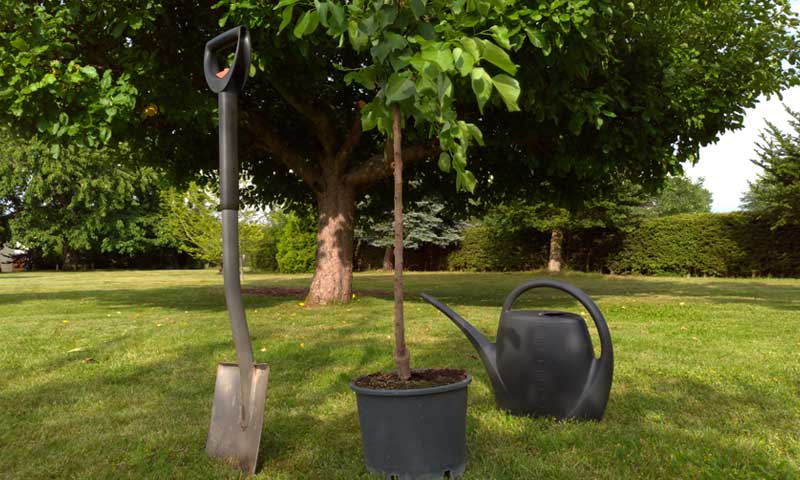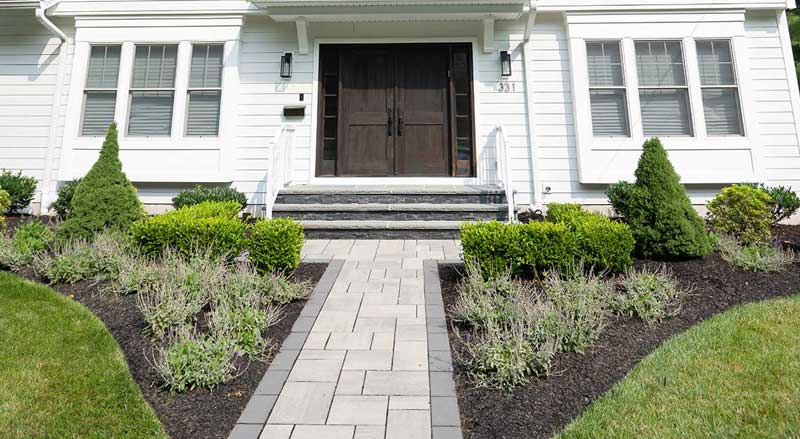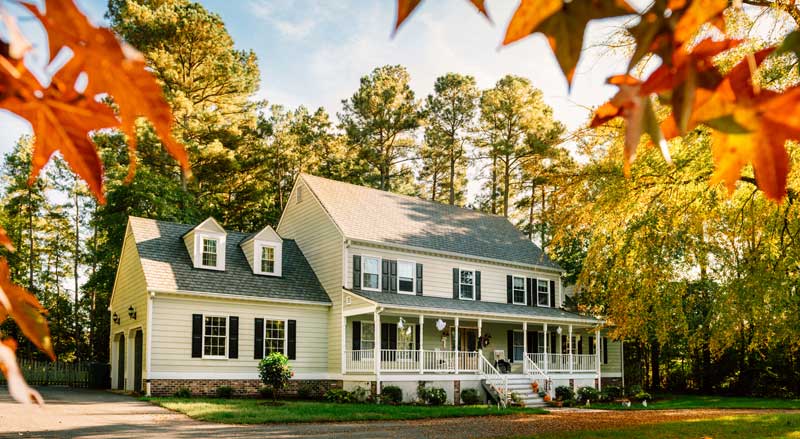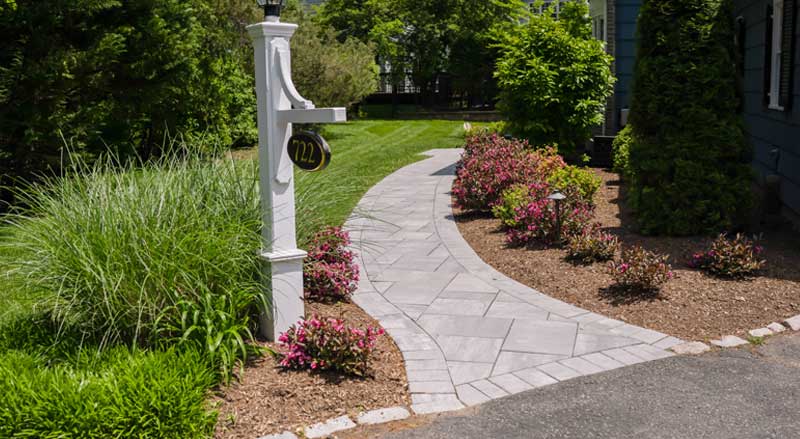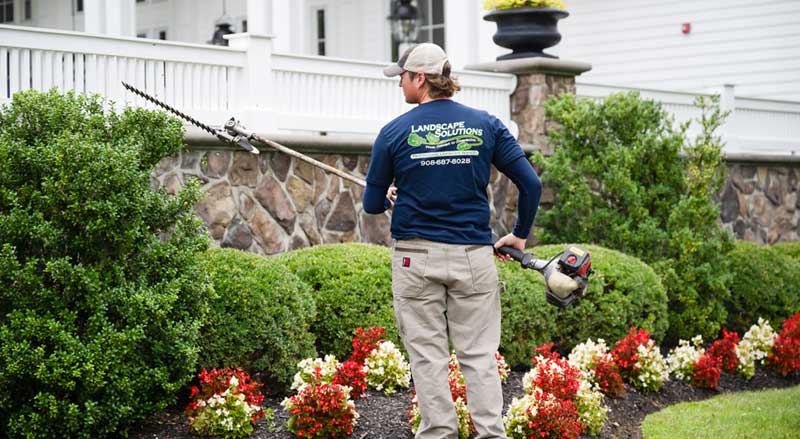Are you thinking about adding new shrubs and trees to your property? If so, you’re probably wondering—is fall a good time to plant shrubs and trees?
Soon the summer will be ending. It was fun getting out and enjoying our beautifully landscaped yards.
But during your time outdoors, did you notice some landscaping improvements you want to make?
Happily, fall is the perfect time to do it!
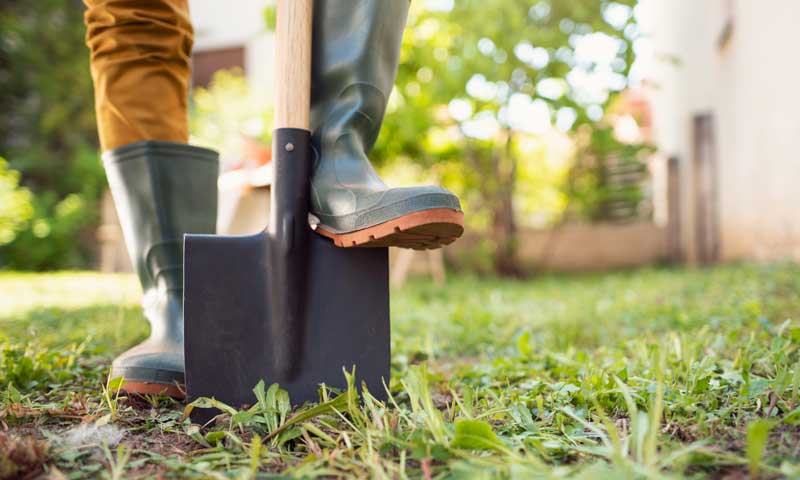
Why Plant Trees in the Fall?
At first, it may seem counterintuitive that fall is the best time to plant trees and shrubs. After all, homeowners usually think of spring as the start of the growing season.
But the fall offers trees and shrubs ideal growing conditions during which they can settle in and prepare for next year’s warmer months.
Do Trees Really Grow in Winter?
Absolutely!
Shrubs and trees keep extremely busy during the cold weather months.
They’re busy growing. You just can’t see it.
When Plants Go Dormant, They Go to Work!
When a tree or shrub goes dormant in the colder months, it’s not sleeping. In fact, it’s hard at work.
Except it focuses its energy underground, in an area you can’t see—its root system.
The trees and shrubs spend their dormant months building and strengthening their root system.
When the spring arrives, and your new transplant comes out of dormancy, it has a developed root system that can help it thrive in the hot summer weather.
Your tree or shrub is now ready to grow above ground—extending branches and developing leaves and flowers.
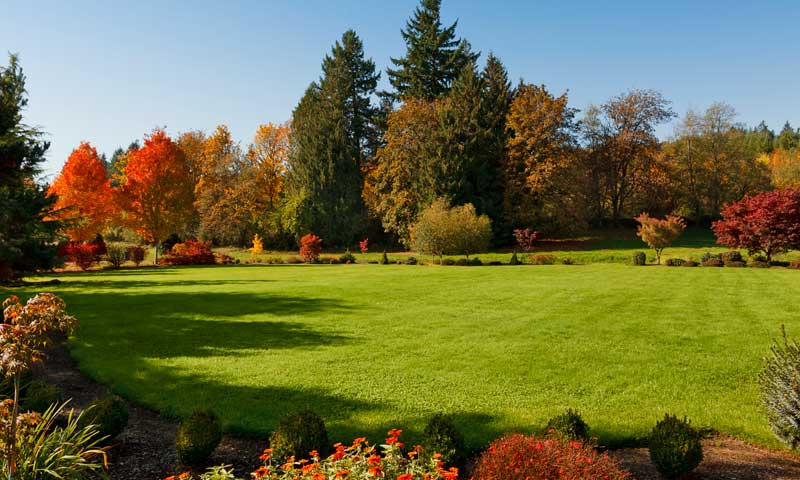
Fall Planting Gives Shrubs and Trees a Head Start in the Spring
You want to plant trees and shrubs no less than six weeks before the first frost. This gives them a good six months to build up their new root system.
If you wait until next spring to first plant trees and shrubs in New Jersey, you’ll probably complete the transplant in late spring (due to plant availability).
This year’s fall transplant will have a six-month head start on your spring transplant.
Your spring tree transplant won’t even think about growing leaves or flowers. It will be too busy playing catch up, creating its new root system.
Spring transplants will struggle to keep up. They’ll be practically defenseless for fighting summer heat and drought.
Transplants Enjoy Cooler Weather and Shorter Days
As fall approaches, outside air temperatures cool. But the soil stays warmer longer.
Trees and shrubs find these conditions ideal for root growth.
Shorter daylight hours also lessen the chance of heat stress, water stress, or transplant stress.
The Fall Means Easier Tree and Shrub Maintenance
With the cooler temperatures, the new shrubs and trees need less watering. This means less work (and a lower water bill) for you!
Transplanted trees and shrubs usually need watering only a few times a week until mid-November.
In winter, the snow and rain will provide water. Transplants also benefit from the snow’s insulating properties that keep the ground warm.
Fewer Weeds, Pests and Disease in the Fall
Weed seeds are dormant in the fall. So, you won’t have to add weeding to your new maintenance responsibilities.
Also, there are fewer insect pests to stress plants.
The drier autumn air minimizes the chance of plant disease.
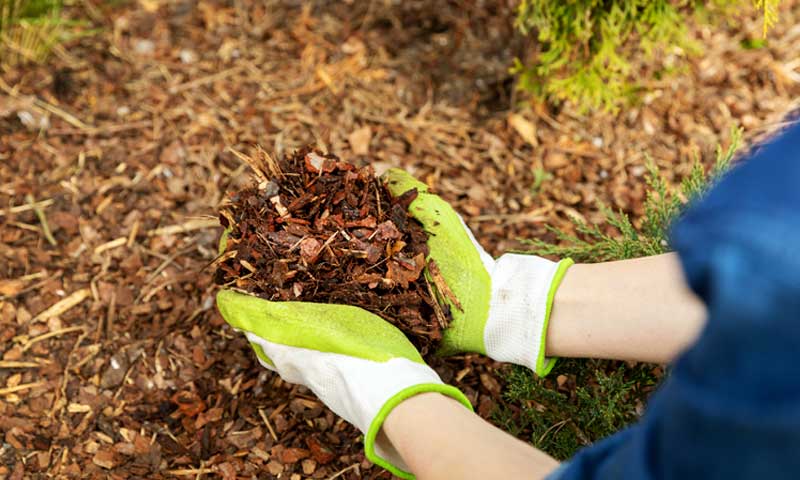
Don’t Forget to Mulch
One last word about fall planting—be sure to mulch!
Apply three inches of mulch around the trees and shrubs, making sure the mulch doesn’t touch the plant directly.
The mulch will help keep the ground and roots warm in the winter and hold in necessary moisture. It will also keep the soil from having intense temperature fluctuations. (This can be upsetting to a new transplant.)
Mulch also keeps weeds away that may try to compete with your new plantings.
New Spring Transplants Suffer
Now you see why fall is the best time to plant trees and shrubs—especially in our New Jersey climate. Our springs and summers are far more challenging for new transplants.
New tree and shrub transplants will risk water, heat, and transplant stress. They will continue to struggle with the climate throughout the summer—and may not even survive.
Many new transplants suffer severely in drought conditions (always a possibility in New Jersey).
Sometimes homeowners don’t notice this distress, or it’s not apparent, until it’s too late.
Once a plant struggling with heat or water stress reaches the point of no return, no amount of water can save it. Sadly, it will wither and die.
In the summer, shade is also an important consideration.
A new transplant in the middle of an unshaded area on a hot summer day is truly fighting an uphill battle.
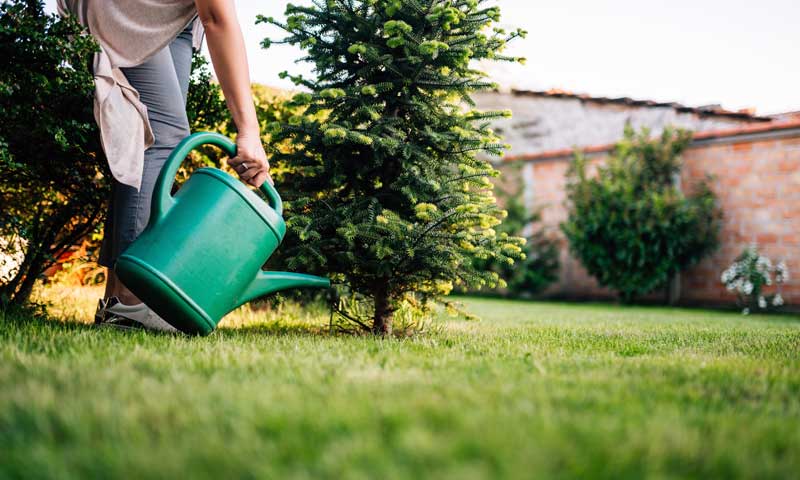
Spring Planting Means More Maintenance
Since new trees and shrubs run a greater risk of heat and water stress, homeowners must be extra vigilant.
They need to be sure new plants and trees have adequate water every day.
Spring or summer transplants often require daily watering in warm weather, with a good soaking once a week.
USDA Hardiness Zone Map
Will you be buying trees and shrubs for your landscape? Check out this USDA NJ Hardiness Zone Map. Find out your climate zone so you can select trees and shrubs that will thrive on your property.
More Useful Blog Posts
Here are just a few of our previous posts that offer great landscaping ideas for your property.
- Best Privacy Trees for New Jersey Landscapes
- Ornamental Grasses and How to Use Them
- Best Plants for a Commercial Property
If you would like to speak with our professional landscapers regarding your home or business, contact us now at Landscape Solutions.

